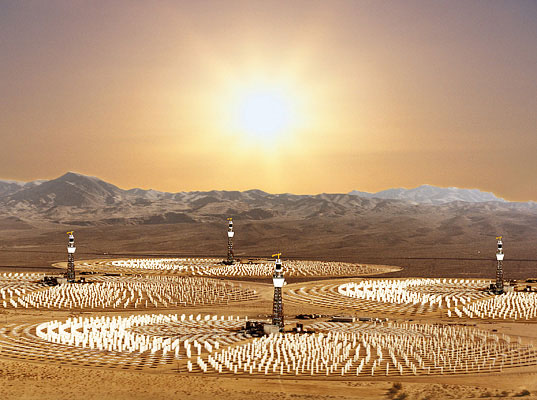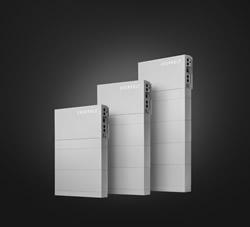The most significant engineering challenges facing desert solar are windblown sand, lack of water and transmission lines. Aside from the physical logistics, political resistance also hinders the development of desert solar.
Can the Challenges of Desert Solar be Overcome?
Emily Hois | SolarReviews
Installing solar panels on 4 percent of the world’s desert areas would provide enough electricity for the global population. This impressive fact makes building solar power plants in the desert highly appealing, but the logistics and political hurdles complicate the allure. Still, some experts are optimistic that, despite the challenges, more desert solar plants will be constructed in the coming years as technology develops.
Thiemmo Gropp, director of DESERTEC, doesn’t feel there are any “serious hurdles” to large-scale desert solar. “Right now we have a car like in the 1920s or 1930s, we don’t have mass production of 2013—but it’s got an engine, it’s got four wheels; it works,” Gropp told the Huffington Post. “I don’t see any technical principle hurdles.” DESERTEC is a foundation that intends to build pilot solar projects in Morocco and Saudi Arabia and ultimately bring 54 megawatts of renewable energy online by 2030.
The most significant engineering challenges facing desert solar are windblown sand, lack of water and transmission lines. Water is an issue for concentrating solar power (CSP) plants like Ivanpah, the largest solar thermal plant in the world. CSP technology uses mirrors to concentrate the sun’s rays to a liquid-filled collector that heats up and produces steam to power a turbine—creating electricity. Like other thermal power plants, such as coal and natural gas, some CSP plants require water for cooling, explains the SEIA. While Ivanpah has the luxury of on-site wells in California’s Mojave Desert, this won't be possible with every remote solar facility.

Both CSP plants and solar photovoltaic (PV) plants are vulnerable to windblown sand, which threatens efficiency levels by accumulating on the surface of the solar panels and mirrors. One method of cleaning desert dust is to deploy trucks with automated arms (used at the Shams 1 CSP plant near Abu Dhabi), although this requires water to hose off the surface. Another method that does not require water is a self-cleaning system where an electrically-sensitive glass or plastic sheet is placed over the solar panels. The sensors monitor dust levels and energize the material when levels are too high, sending a “dust-repelling wave cascading over the surface of the material,” reports the American Chemical Society.
Transmission lines have also posed a problem for desert solar plants. In fact, BrightSource Energy, who co-owns Ivanpah, agreed to terminate two contracts where the utility company PG&E would purchase solar energy from two 250-megawatt solar thermal plants in California's Inyo County. The contract was terminated in April due to “challenges associated with the project schedule and uncertainty around the timing of transmission upgrades,” BrightSource reported. In remote areas like the desert, upgrading transmission lines is one hurdle, but constructing new transmission lines to transport power to the populated areas is a huge, expensive undertaking that is often controversial.
Aside from the physical logistics, political resistance also hinders the development of desert solar. Some environmentalists oppose solar power in the desert because they argue it will harm the delicate environment. The most recent angle of criticism is the theory that a dozen endangered birds mistook the solar arrays for glistening bodies of water, and plummeted to their deaths.
Over the past few years, members of Native American tribes have vocalized fears that huge solar power plants will be constructed on sacred land. Some tribal members have taken action, such as Alfredo Figueroa. An elder member of the Chemehuevi tribe, Figueroa filed a suit in 2011 to prevent the Blythe Solar Power Project from damaging nearby geoglyphs in California’s Sonoran Desert. But the project’s developer soon went bankrupt, and the 6,000-acre solar thermal project was abandoned.
Other environmentalists like Johanna Wald, a veteran environmental attorney for the National Resources Defense Council, support solar plants in remote desert lands and praise the clean energy for combating climate change.
“I have spent my entire career thinking of myself as an advocate on behalf of public lands and acting for their protection,” Wald said. “I am now helping facilitate an activity on public lands that will have very significant environmental impacts. It’s not an accommodation; it’s a change I had to make to respond to climate.”
The original article was posted on SolarReviews.
The content & opinions in this article are the author’s and do not necessarily represent the views of AltEnergyMag
Comments (0)
This post does not have any comments. Be the first to leave a comment below.
Featured Product

